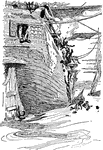!["In order that [Alaric's] body might be saved from the gaze of the vulgar and the rage of his foes, he gave direction that it should be buried in the bed of the river Busentinus."—Ridpath, 1885](https://etc.usf.edu/clipart/78900/78952/78952_alaricburial_mth.gif)
The Burial of Alaric in the Bed of the Busentinus
"In order that [Alaric's] body might be saved from the gaze of the vulgar and the rage of his foes,…

Moss-Rose
Also known as Portulaca grandiflora. A small flower, fast-growing flower that can grow up to 30 centimeters…
China Rose Radish
Also known as Raphanus sativus. An edible root vegetable whose seeds can also be used for oil production.…

British Troops on Concord Common
"1. Companies of the Regulars marching into Concord. 2. Companies of the Regulars drawn up in order.…
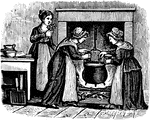
Too Many Cooks Spoil the Broth
"We see here a number of cooks busily engaged in making some broth which they wish to have better than…
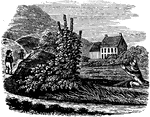
The Longest Way Round, is the Shortest Way Home
"These two boys have just been let out of school, and are returning home. Their father's house is seen…
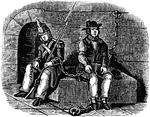
Safe Bind, Safe Find
"A rogue is caught - if him you'd safely find, / Fetter each limb, and then securely bind. / Dealing…

Prove All Things, Hold Fast that Which is Good
"The numerous systems scattered wide abroad, / Compare them closely by the Word of God; / Hold fast…
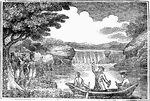
Roger Williams Crossing the Pawtucket River
Roger Williams was the founder of the Providence Plantation in Rhode Island, as well as the first Baptist…

Cross of the Legion of Honor
"Instituted by Napoleon in 1802; given to both soldiers and civilians for distinguished services to…

Arming a Knight
"At the age of twenty-one the squire became a knight, being then introduced to the order of knighthood…

A Roman Standard Bearer
"From a gravestone of the first century A.D. The standard consists of a spear crowned with a wreath,…

Star of the Order of the Garter
"The Star is the badge, first ordered by Charles I. The rays are of silver or diamonds. The star is…

Insignia of the Order of the Thistle
"The Jewel or Badge, attached to the collar, or worn depending from a broad dark green ribbon which…

Insignia of the Order of St. Patrick
"The ribbon, of sky-blue, four inches in width, is worn over the right shoulder, and sustains the badge…
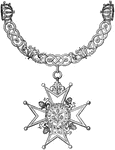
Insignia of the Order of the Bath
"The collar, of gold, in weight thirty ounces, is composed of nine imperial crowns, and eight groups…

Insignia of the Order of the Star of India
"This Order was instituted by Her Majesty the Queen, in the year 1861, for bestowing honor upon the…

Second Kind of Lever
"In the second order of levers, the resistance is between the fulcrum and the power; and, as before,…
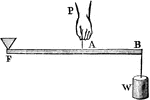
Third Kind of Lever
"In the third order of lever the power acts between the prop and the resistance, where also P : W ::…
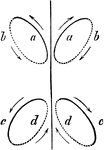
Ellipses of Swimming Frog
A diagram showing the motions a young frog makes while swimming. In this stage of life, the frog makes…
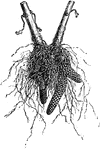
Root of the Achimene
In order to grow achimenes they have to be started and grown in stove heat until they flower. Roots…

Larva, Frothy Secretion, and Perfect Insect of the Frog Hopper
Frog hopper belong to the same order as aphidoe, to the section which has the leathery upper wings.…

Hedera Helix Lucida
Hedera helix lucida is an ivy with triangular, glossy leaves. This ivy is a fast grower.

House Cricket
House crickets are in the order Orthoptera. Crickets are destructive to plants in every stage after…

Green Grasshopper
Grasshoppers belong to the order Orthoptera. Grasshoppers have mouths fit for biting, net-veined wings,…

Female Cockroach
Cockroaches belong to the order Orthoptera. Cockroaches are harmful to plants in every stage after leaving…

Larva, Frothy Section, and Perfect Insect of the Frog Hopper
Frog hoppers belong to the order Heteroptera. This order is also known as plant bugs. These insects…

Hummingbird Hawk Moth
Hummingbird hawk moth is the common name of macroglossa stellatarum. This moth flies very fast. While…
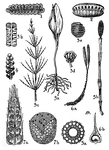
Marattiaceae and Ophioglossaceae
The order marattiaceae, and the maratiia family, consists of stately tropical ferns with thickened,…
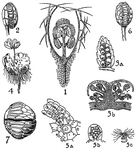
Hymenophyllaceae, Cyatheaceae, and Polypodiaceae
The hymenophyllaceae order consists of very delicate ferns. The cyatheaceae order usually consists of…
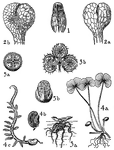
Schizaeaceae, Osmundaceae, Salviniaceae, and Marrsileaceae
Schizaeaceae: 1, aneimia, sporangium. Osmundaceae: 2, Osmunda, sporangium; a, front view, b, back view.…
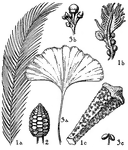
Cycadaceae and Ginkogoaceae
Cycadaceae is an order with more or less woody plants. The stems are thick, unbranched, columnar, or…

Taxaceae, Pinaceae, and Gnetaceae
Taxaceae order consists of the yew family. The Pinaceae order consists of the pine family. The Gnetaceae…
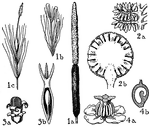
Typhaceae, Pandanaceae, and Naiadaceae Orders
The typhaceae order consists of perennial marsh herbs with creeping rootstocks. The pandanaceae order…
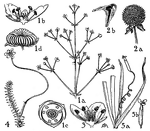
Alismaceae, Butomaceae, and Hydrocharitaceae Orders
Alismaceae is an order of herbaceous marsh plants with milky juice. Butomaceae is an order of aquatic…

Gramineae Order
Gramineae order consists of the grass family. Pictured are (1a) a part of a grass panicle, (1b) spikelet,…

Cyperaceae, Palmaceae, and Cyclanthaceae Orders
Pictured from the cyperaceae orders are (1) scirpus, (1a) a portion of inflorescence, (1b) flower, (2)…
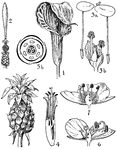
Araceae, Lemnaceae, Bromeliaceae, and Commelinaceae Orders
Pictured from the araceae order are (1) arisaema, spathe and spadix, and (2) arum spadix with male and…
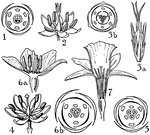
Pontederiaceae, Juncaceae, Liliaceae, and Amaryllidaceae Orders
Shown are flowers of the pontederiaceae, juncaceae, liliaceae, and amaryllidaceae orders. These flowers…
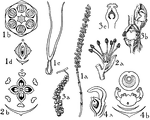
Casuarinaceae, Saururaceaem, Oiperaceae, and Chloranthaceae Orders
Shown are the orders of Casuarinaceae, Saururaceaem, Oiperaceae, and Chloranthaceae. Pictured are various…
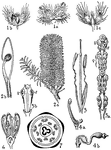
Urticaceae, Loranthaceae, and Olacaceae Orders
Shown are the Urticaceae, Loranthaceae, and Olacaceae orders. Urtica, banksia, protea, phoradendron,…

Nyctanginaceae, Phytolaccaceae, Aizoaceae, and Portulacaceae
Pictured are the orders of Nyctanginaceae, Phytolaccaceae, Aizoaceae, and Portulacaceae. Flowers of…

Bassellaceae and Caryophyllaceae Order
Pictured are the orders of Bassellaceae and Caryophyllaceae. The flower pictured belong to the Bassellaceae…

Order of Nymphaeaceae
Nymphaeaceae is an order of aquatic herbs including the water lily family. This order has eight genera…
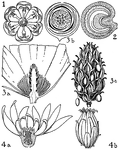
Berberidaceae, Menispermaceae, Mahnoliaceae, and Calycanthaceae Orders
Shown are the orders of berberidaceae, menispermaceae, magnoliaceae, and calycanthaceae. The illustrated…
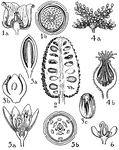
Annonaceae, Myristicaceae, Monimiaceae, and Lauraceae Orders
The orders of Annonaceae, Myristicaceae, Monimiaceae, and Lauraceae are pictured. The flowers of these…
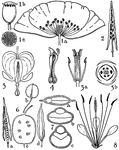
Orders of Papaveraceae, Fumariaceae, Cruciferae, and Capparidaceae
Pictured are the orders of papaveraceae, fumariaceae, cruciferae, and capparidaceae. The flowers of…

Orders of Sarraceniaceae, Nepenthaceae, and Droseraceae
The orders pictured are sarraceniaceae, nepenthaceae, and droseraceae. The flowers of these orders that…
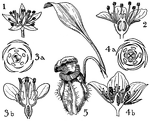
Orders of Crassulaceae, Saxifragaceae, and Cephalotaceae
Pictured are the orders of crassulaceae, saxifragaceae, and cephalotacea. The flowers of these orders…
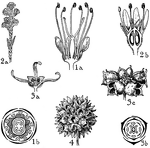
Orders of Cunoniaceae, Bruniaceae, and Hamamelidaceae
The orders of cunoniaceae, bruniaceae, and hamamelidaceae are pictured. The flowers of these orders…

Orders of Plantanceae, Rosaceae, and Leguminosae
Pictured are the orders of plantanceae, rosaceae, and leguminosae. The flowers of these orders that…
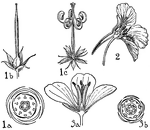
Orders of Geraniaceae, Tropaeolaceae, and Linaceae
Pictured are the orders of geraniacea, tropaeolaceae, and linaceae. The flowers of these orders that…

Orders of Erythroxylaceae, Zygophyllaceae, and Rutaceae
Pictured are the orders of erythroxylaceae, zygophyllaceae, and rutaceae. The flowers of these orders…
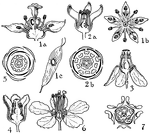
Orders of Simarubaceae, Burseraceae, Meliaceae, and Malpighiaceae
The orders of simarubaceae, burseraceae, meliaceae, and malpighiaceae are pictured. The flowers of these…
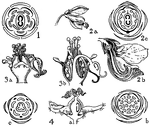
Orders of Tremandraceae, Polygalaceae, and Euphorbiaceae
The orders pictured are tremandraceae, polygalaceae, and euphorbiaceae. The flowers of these orders…

Orders of Empetraceae, Coriariaceae, Anacaridaceae, and Cyrillaceae
The orders pictured are empetraceae, coriariaceae, anacaridaceae, and cyrillaceae. The flowers of these…
